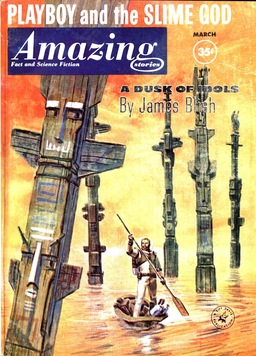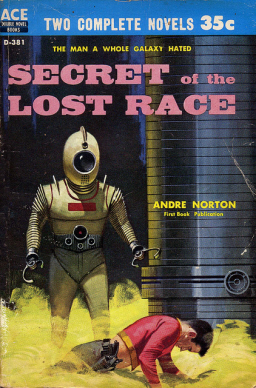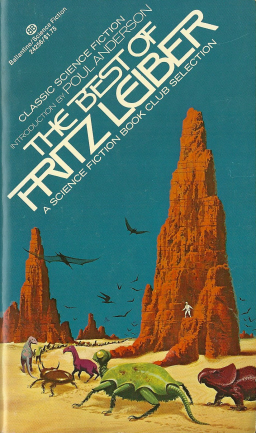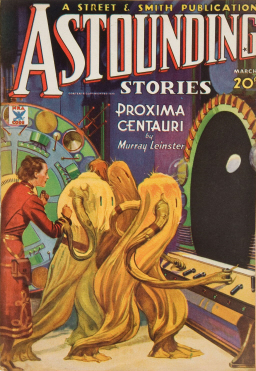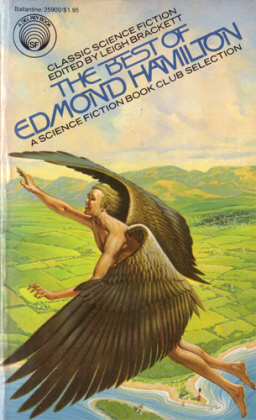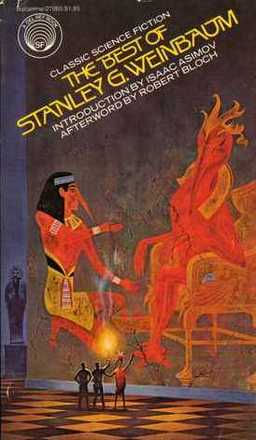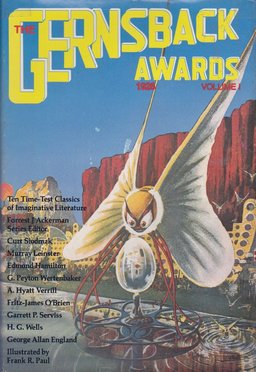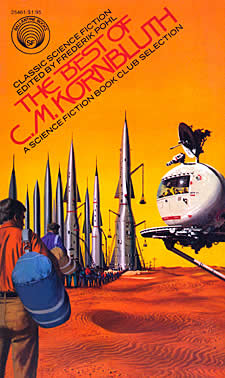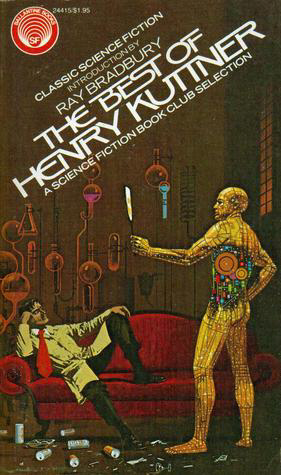Galaxy Science Fiction, April 1951: A Retro-Review
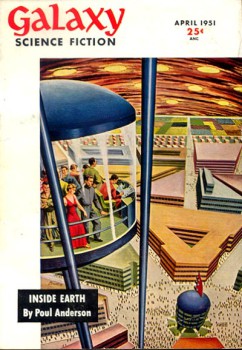 With this issue, Galaxy reached a crossroads. Caught by rising costs, H. L. Gold had to do something.
With this issue, Galaxy reached a crossroads. Caught by rising costs, H. L. Gold had to do something.
He noted on the Editor’s Page that he could take one of two actions. He could cut costs by lowering fiction pay rates or the quality of the paper stock. Or he could raise the price of the magazine. Pressed for time, he opted for the latter. Beginning with the May, 1951 publication, the price jumped from 25 cents to 35 cents.
For those who love statistics but hate math, that’s a 40% increase. But the way I see it: quality has a cost. Good call, Mr. Gold.
Now let’s turn to the fiction.
“Nice Girl with 5 Husbands” by Fritz Leiber – Tom Dorset is an artist, unknowingly displaced by the winds of time to a century in the future. He meets a girl named Lois who brings him back home to meet her family. Tom learns that not only is Lois married, but the relational structure of the family is unlike anything he’s ever heard of.
I found it interesting that the protagonist never put together that he was in the future until someone casually mentioned the date. The story seemed more of a quick picture of how the future could unfold, but I wanted something deeper by the end.
“Inside Earth” by Poul Anderson – Conru gives up his entire life, even his physical appearance, in order to appear like an Earthling. Valgolia rules the galaxy, including Earth, but its aim is more than controlling the planets. It wants equality throughout the planets, and such can only be achieved by forcing unity.
